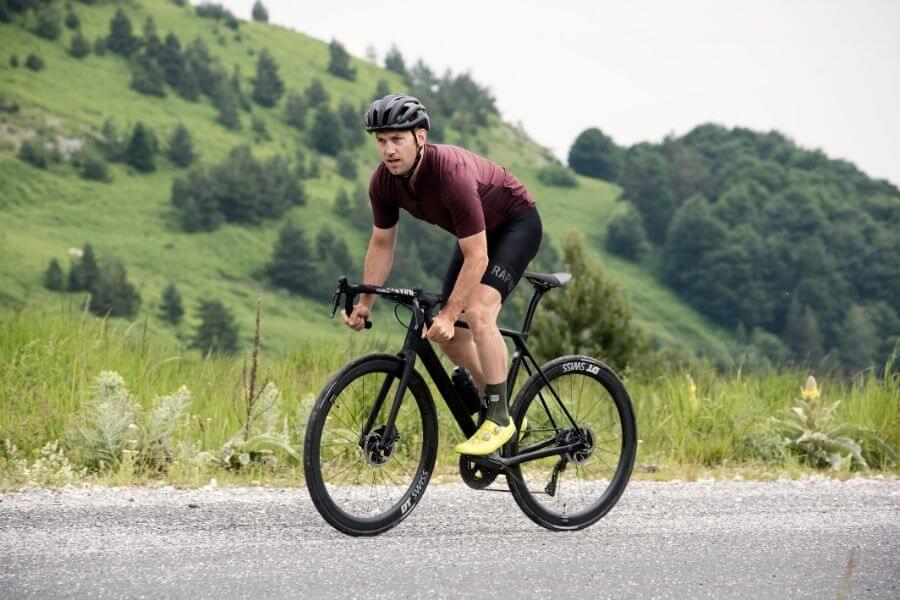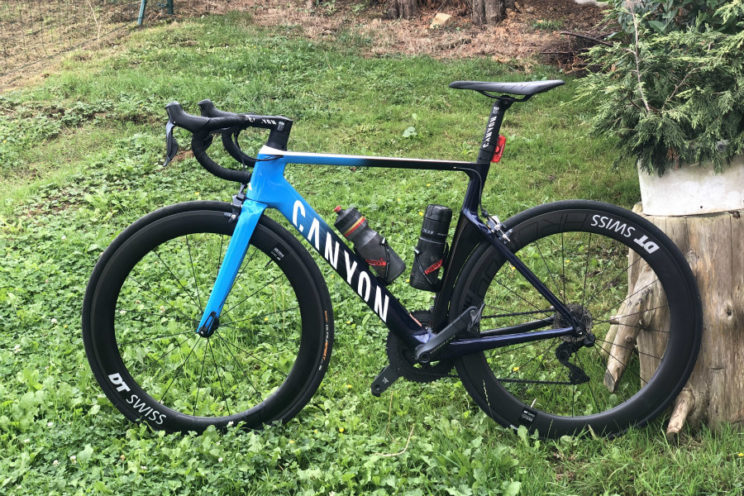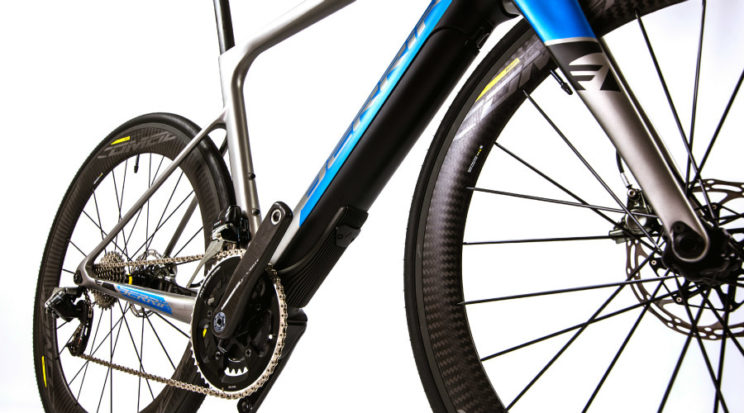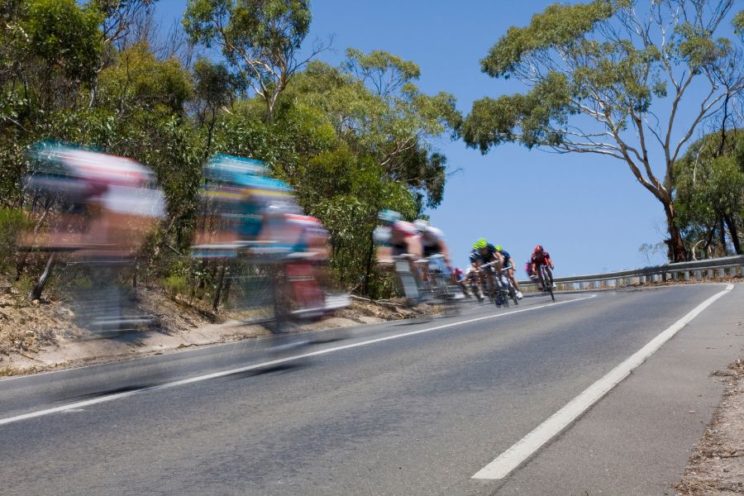Profile wheels are no longer bounded to professional cyclists bicycles or counterreloj and triathlon tests. The lowering of carbon wheels in recent years, due to the diversification of models and ranges and launching different profile sizes, makes these profile wheels extended in a generalized way among amateur cyclists.
But ... What benefits do these wheels provide? Are they a fashion or really improve performance? Is it worth buying a set of profile wheels? It is time to answer all your questions about the wheels of the present (and possibly the future) in road cycling.
What are profile wheels?
They are called profile wheels to those who have an extension in height of the tire surface beyond the braking track (the latter for bikes with conventional Zapata brakes).
However, in recent years the term profile wheels have popularly associated with those that have a large tire profile or height, greater than 30 mm, and not to those of low profile, less than 30 mm, called simply conventional wheels or classic (although these also have a profile).
High profile wheels (more than 40 mm) improve aerodynamics rolling in plain at speeds above 30 km/h
Types of profile wheels

We can classify the current profile wheels for road cycling into three types, attending to that tire height.
Low profile
As we have already explained, they are the conventional road wheels with a profile size (measured from both edges of the tire, exterior and interior) between 20 and 30 mm. They are the cheapest and the most recommended to go up and down mountain ports.
Average profile
Its profile ranges between 30 and 40 mm. They are versatile wheels with an extra aerodynamics. Right now they are having a great commercial boom for both amateur and professionals.
High profile
This type of road bike wheels have a profile greater than 40 mm and is the step prior to the lenticular wheel (solid, without radios) of counterreloj or triathlon. They are the aerodynamic wheels par excellence, traditionally used in counterreloj tests. But in recent years with the rise of Aero -type bicycles they have also popularized among fans. They are wheels that improve aerodynamics rolling in plain at high speeds (from 30 km/h).
In addition, it is possible to make a distinction between them according to their material. Although the higher quality profile wheels and more benefits are carbon, there are also somewhat heavier aluminum versions and with a worse aerodynamic coefficient, but at the same time they reduce the price quite a lot.
Low profile wheels are the cheapest and the most recommended to go up and down mountain ports
Profile wheels benefits for road cycling

We can list two great benefits of profile wheels for road bicycles:
Best aerodynamics
The medium and high profile wheels notoriously increase the aerodynamic performance of the bicycle. The wheels, and especially the front, are the most exposed bike parts to the friction with the air, being the profile of the tires one of the key parts of that friction or brake on the advance. Increasing the surface of the tire allows to dissipate that resistance of the wind, if this is frontal or rear, and increase the inertia of the wheel in motion.
This translates into aerodynamic gains greater than 10% on flat terrain with respect to a low profile wheel, as they reveal in
This report by the British magazine Cyclist. In the same report they also point out that the engineers of Cervélo, one of the most consolidated road bicycle manufacturers, encrypted a certain aerodynamic gain of the profile wheels in increases with non -exceeding slopes of 5% for amateur cyclists, and until 8 % pending in professionals.
Greater rigidity
It can be considered an advantage if we rolle on flat terrain and without many curves. Increasing the profile of the tire means adding more material, cutting the length of the radios and, ultimately, increase the rigidity of the wheel. This translates into a better transfer of the power to the wheel that is generated by pedaling, without the greatest energy losses of the classic wheels due to its greater flexion.
Disadvantages of profile wheels

The increase in the profile has a series of counterparts that is also convenient to assess:
Increase in weight
A larger profile is more use of material and, therefore, an increase in wheel weight. Comparing conventional wheels (25 mm) with 40 mm profile, the average increase is 100 grams more per wheel. This translates into worse behavior rolling at low speeds, especially in climb and before rhythm changes. It will cost more to move them.
Less manageable with side wind
This type of wind It is one of the worst enemies of the profile wheels. They become more ungovernable because the wind collides with a larger surface of the tire, worsening the control and handling of the bicycle.
Worse behavior in irregular asphalt
The increase in the rigidity of these wheels translates into less absorption of vibrations, flexion of the pieces, etc. On roads with rough asphalt in poor condition they transmit more intensity those impacts to the cyclist than with conventional wheels.
Price: Do you cost more profile wheels than conventional ones?
The price increase does not really go in line with the increase in the profile, but of the material used: aluminum or carbon. In brands such as Mavic, for example, the COSMIC Carbon SL series in 32, 40 and 65 mm profiles The price is the same: € 1,190 per set.
The same happens with another reference brand such as
Fulcrum: set with 55 and 40 mm profile, such as disk brakes, cost the same, 2,109 euros. While high -performance conventional ones, also for disc and carbon, such as Racing Zero, are a bit cheaper: € 2,050. A little decisive difference in those price ranges.
On the other hand, if we compare some carbon profile wheels with others in similar profile in aluminum, the price difference is already notorious, as with the conventional ones. In the case of Fulcrum, the Racing 4 dB model, with 35 mm aluminum tire is a price of € 431, the set, while a carbon model, the Wind DB with a similar 40 mm profile, shoots up to the 1,263 euros the pair.
Profile wheels are a good option for cyclists who like to quick
When you have to use profile wheels
[Captation id = "Attachment_8630" Align = "Alignnone" Width = "744"]

Image: Getty Images.[/caption]
Analyzed the types, advantages, disadvantages and prices of the profile wheels, it is time to assess whether it is worth installing on your road bike. Like many other aspects of the assembly of the bicycle, your purchase will be conditioned by the use to which they are intended.
Profile wheels are a good option for cyclists who like to roll quick same.
They are wheels that also demand good bicycle handling at high speed due to its greater inertia, instability with strong lateral wind or less absorbent in irregular asphalt. In this way, if you have been riding a road bike for a short time, it is recommended that you accumulate kilometers and increase your level by riding conventional wheels, more manageable and comfortable.
Finally, for anyone who is thinking of changing their aluminum wheels for carbon, getting directly with profile will be a good choice if you do not obsess so much the aspect of the weight and you prefer to roll quickly. On the other hand, if you want to lose your bicycle to the fullest, you opt for conventional ones, which will also behave better uploading and lowering mountain ports.
 We can classify the current profile wheels for road cycling into three types, attending to that tire height.
We can classify the current profile wheels for road cycling into three types, attending to that tire height.
 We can list two great benefits of profile wheels for road bicycles:
We can list two great benefits of profile wheels for road bicycles:
 The increase in the profile has a series of counterparts that is also convenient to assess:
The increase in the profile has a series of counterparts that is also convenient to assess:
 Image: Getty Images.[/caption]
Analyzed the types, advantages, disadvantages and prices of the profile wheels, it is time to assess whether it is worth installing on your road bike. Like many other aspects of the assembly of the bicycle, your purchase will be conditioned by the use to which they are intended.
Profile wheels are a good option for cyclists who like to roll quick same.
They are wheels that also demand good bicycle handling at high speed due to its greater inertia, instability with strong lateral wind or less absorbent in irregular asphalt. In this way, if you have been riding a road bike for a short time, it is recommended that you accumulate kilometers and increase your level by riding conventional wheels, more manageable and comfortable.
Finally, for anyone who is thinking of changing their aluminum wheels for carbon, getting directly with profile will be a good choice if you do not obsess so much the aspect of the weight and you prefer to roll quickly. On the other hand, if you want to lose your bicycle to the fullest, you opt for conventional ones, which will also behave better uploading and lowering mountain ports.
Image: Getty Images.[/caption]
Analyzed the types, advantages, disadvantages and prices of the profile wheels, it is time to assess whether it is worth installing on your road bike. Like many other aspects of the assembly of the bicycle, your purchase will be conditioned by the use to which they are intended.
Profile wheels are a good option for cyclists who like to roll quick same.
They are wheels that also demand good bicycle handling at high speed due to its greater inertia, instability with strong lateral wind or less absorbent in irregular asphalt. In this way, if you have been riding a road bike for a short time, it is recommended that you accumulate kilometers and increase your level by riding conventional wheels, more manageable and comfortable.
Finally, for anyone who is thinking of changing their aluminum wheels for carbon, getting directly with profile will be a good choice if you do not obsess so much the aspect of the weight and you prefer to roll quickly. On the other hand, if you want to lose your bicycle to the fullest, you opt for conventional ones, which will also behave better uploading and lowering mountain ports.












